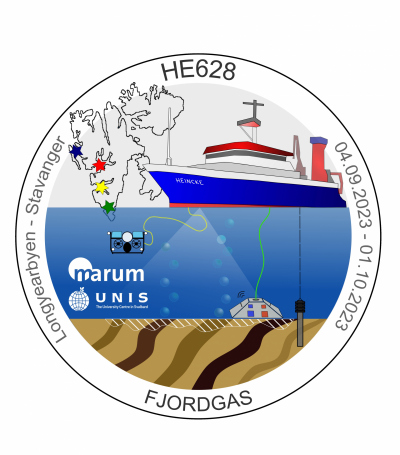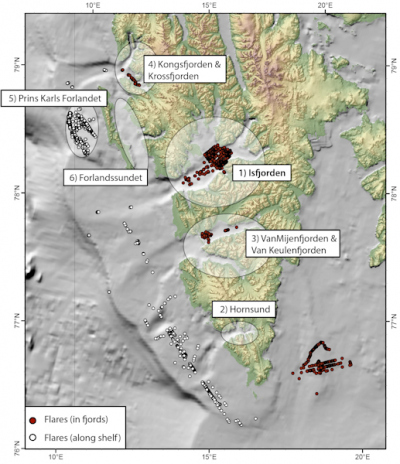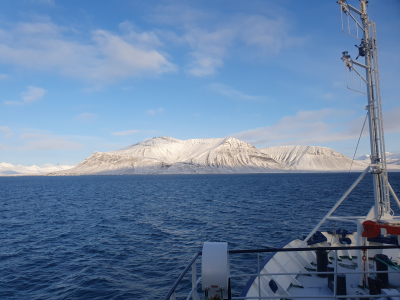- Home
- Research
- Expeditions
- HE628
RV HEINCKE - HE628
Project F J O R D G A S
Gas system within Svalbard’s fjords
04.09.2023 - 01.10.2023
Longyearbyen - Stavanger

We plan to conduct a research cruise with R/V HEINCKE to investigate the gas seep system within Svalbard’s fjords, and its adjacent areas. Seafloor seepage in the form of dissolved methane release, as well as free gas bubbles have been detected not only along the margin west of Svalbard, but also more recently within the fjord systems. Additionally, gas associated with onshore permafrost has been evidenced during a recent drilling campaign in West Spitsbergen. However, the complex gas system is not well understood due to lack of detailed investigations and various questions regarding the seepage remain unresolved. Also, the presence of gas hydrates in shallow sediments within the deepest parts of the fjords have been proposed by thermobaric modelling approaches, but their physical existence needs to be proven. In the context of climate change, this vulnerable environment is believed to be affected by temperature increase, and we urgently need to provide a better understanding about the system and its variability before being modified. We plan to systematically investigate the distribution of gas bubble emissions within four different fjord systems in Western Svalbard using ship-based hydroacoustics and to provide first estimates of released methane quantities into the water column. Variability studies with a Sonar lander will help to resolve short-term variability and improve the quantification approach. The source and fate of methane will be analyzed through gas bubble sampling with a MiniROV and continuous atmospheric methane measurements, respectively. Gas hydrate occurrence should be proven by sediment coring and pore water analyses. A better knowledge about the gas system within Arctic fjords would be needed to evaluate the importance for gas exchange and fluid fluxes from the seafloor into the water column and atmosphere in order to form a baseline for future monitoring during changing environmental conditions.




